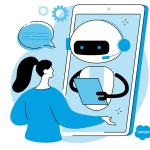How Technology Helped BYJU’S Scale Up to 100 M Users



BYJU’S is the story of a group of passionate teachers from India who set out to make learning more engaging, accessible, and fun. Knowing that they couldn’t physically be present everywhere teaching everyone at once, the group did the next best thing—build an online learning platform and mobile app.
BYJU’S is the story of a group of passionate teachers from India who set out to make learning more engaging, accessible, and fun. Knowing that they couldn’t physically be present everywhere teaching everyone at once, the group did the next best thing—build an online learning platform and mobile app.
Today, BYJU’S is the world’s most valued edtech company with 100 million users and 6.5million subscriptions. Through one-to-one learning journeys, we help students master complex concepts, become expert problem solvers, and develop a lifelong love for learning.
BYJU’S is built on three pillars:
 Together, these pillars have made BYJU’S one of the most preferred education platforms across the globe.
Together, these pillars have made BYJU’S one of the most preferred education platforms across the globe.
Riding the COVID-19 wave
Since COVID-19 shut schools, the demand for BYJU’S services has soared. Between April and August 2020, we onboarded more than 25 million new users on our platform. To put that in perspective, it took us about four years to get to our first 40 million users. Now, we’re scaling at an unprecedented rate—but not at the cost of quality.
Our goal is to deliver the best customer experiences at every touchpoint. After all, we aren’t just providing an edtech platform—we’re also supporting and guiding students throughout their learning journey.
To provide these services at scale—and, more importantly, with exceptional quality—we need complete and real-time visibility into the student journey. We need to know that our teams are engaging students effectively across touchpoints and channels. If a parent or student has a query, we need to ensure that it’s addressed on time, every time.
Achieving these insights using traditional spreadsheets and manual processes is next to impossible, given that we have thousands of employees, millions of customers, and multiple touchpoints. But that’s where technology makes a difference. Not only does it automate and speed up our processes, but it also gives us the intelligence we need to make faster, better decisions.
For instance, with Salesforce, we have real-time visibility into customer queries, complaints, and service escalations.
We can also track if employees are achieving their post-sales objectives and KRAs within the defined TATs. These daily reports are a boon to our leadership team. Every day, they help us identify how to engage with customers better.
What’s great about Salesforce is that all the core features we need are already built-in. So, implementation has been quick.
We also use other tools for employee onboarding, training, collaboration, and more. Together with Salesforce, these technologies are enabling our business to scale seamlessly without sacrificing quality.
Accelerating user adoption in 3 simple steps
Technology is only as useful as its adoption. What helped with our Salesforce adoption was that from day one, we had the buy-in and support of our leadership team, as well as key stakeholders in the post-sales process. All of them knew what to expect from the new system.
Since Salesforce was intuitive and easy-to-use, adoption and training were fairly simple. Today, the team can look back and see just how much manual work has been eliminated by the platform. Many have said they can’t imagine doing CRM without Salesforce.
In my experience, successful user adoption comes down to three best practices:

Online learning is here to stay
In the past year and a half, millions of parents and students have realised the value that BYJU’S can add to their lives. They’re no longer hesitant about online education or remote learning, especially when it’s as personalised and engaging as at BYJU’S. So even when COVID-19 ends and students return to schools, we anticipate that demand for our services will continue—but perhaps in a different avatar.
Right now, most of our learning programs are ‘asynchronous’. That means students learn at their own pace and in their own time. We have also piloted ‘synchronous’ learning program and have ensured that the timings do not clash with school hours when things are back to normal. This means students will learn in real-time with an instructor, and these sessions can be scheduled after school hours i.e., as extra tuition.
Through ideas like this, we’re constantly adapting our offerings to align with the times. That readiness to pivot is one of our biggest strengths. All of us at BYJU’S know that the only constant in the company is change. And we’re prepared for it. We’ve learned to be agile, innovative, and open to new opportunities.
We’re now expanding our use of technologies like AI, analytics, and machine learning. We’re also scaling up our tech teams with 6,000-8,000 new employees. All these efforts are geared towards making learning even more personalised, simple, and accessible. The more effectively children can learn, the better they can fulfil their potential, and contribute towards building a better world.
Leading educational institutions and edtech companies are using Salesforce in their sales, service, operations, and more. Connect with us to discuss your vision, and view a customised demo.






















